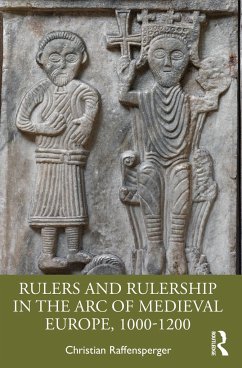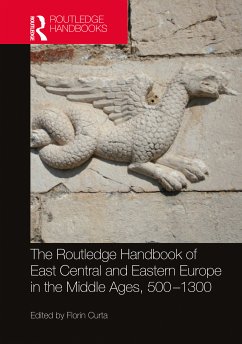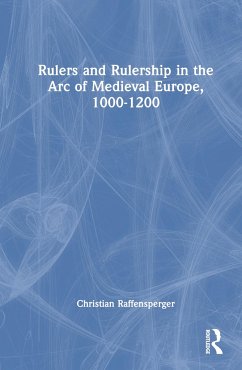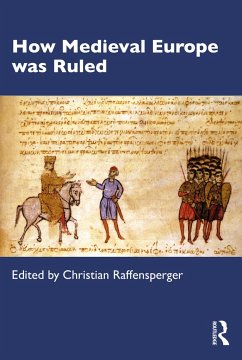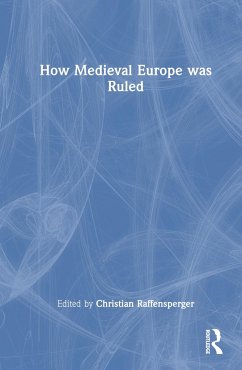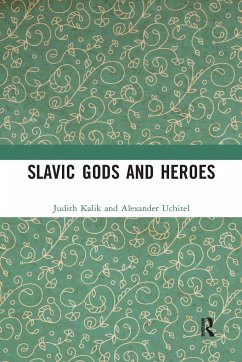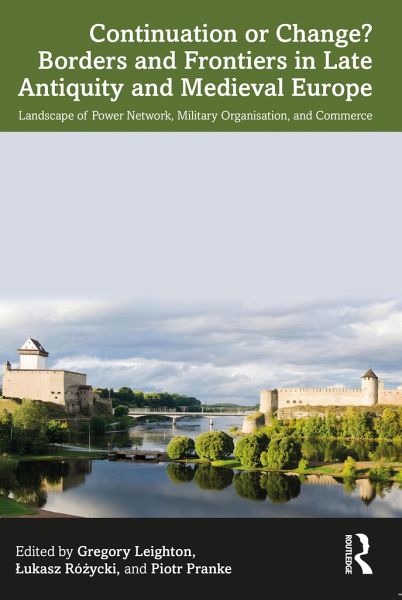
Continuation or Change? Borders and Frontiers in Late Antiquity and Medieval Europe
Landscape of Power Network, Military Organisation and Commerce
Herausgegeben: Leighton, Gregory; Rózycki, Lukasz; Pranke, Piotr
Versandkostenfrei!
Versandfertig in 6-10 Tagen
50,99 €
inkl. MwSt.
Weitere Ausgaben:

PAYBACK Punkte
25 °P sammeln!
This volume examines interdisciplinary boundaries and includes texts focusing on material culture, philological analysis, and historical research. What they all have in common are zones that lie in between, treated not as mere barriers but also as places of exchange in the early Middle Ages.Focusing on borderlands, Continuation or Change uncovers the changing political and military organisations at the time and the significance of the functioning of former borderland areas. The chapters answer how the fiscal and military apparatus were organised, identify the turning points in the division of ...
This volume examines interdisciplinary boundaries and includes texts focusing on material culture, philological analysis, and historical research. What they all have in common are zones that lie in between, treated not as mere barriers but also as places of exchange in the early Middle Ages.
Focusing on borderlands, Continuation or Change uncovers the changing political and military organisations at the time and the significance of the functioning of former borderland areas. The chapters answer how the fiscal and military apparatus were organised, identify the turning points in the division of dynastic power, and assign meaning to the assimilation of certain symbolic and ideological elements of the imperial tradition. Finally, the authors offer answers to what exactly a "statehood without a state" was in regard to semi-peripheral and peripheral areas that were also perceived through the prism of the idea of a world system, network theory, or the concept of so-called negotiating borderlands.
Continuation or Change is a useful resource for upper-level undergraduates, postgraduates, and scholars interested in medieval warfare, Eastern European history, medieval border regions, and cross-cultural interaction.
Focusing on borderlands, Continuation or Change uncovers the changing political and military organisations at the time and the significance of the functioning of former borderland areas. The chapters answer how the fiscal and military apparatus were organised, identify the turning points in the division of dynastic power, and assign meaning to the assimilation of certain symbolic and ideological elements of the imperial tradition. Finally, the authors offer answers to what exactly a "statehood without a state" was in regard to semi-peripheral and peripheral areas that were also perceived through the prism of the idea of a world system, network theory, or the concept of so-called negotiating borderlands.
Continuation or Change is a useful resource for upper-level undergraduates, postgraduates, and scholars interested in medieval warfare, Eastern European history, medieval border regions, and cross-cultural interaction.





